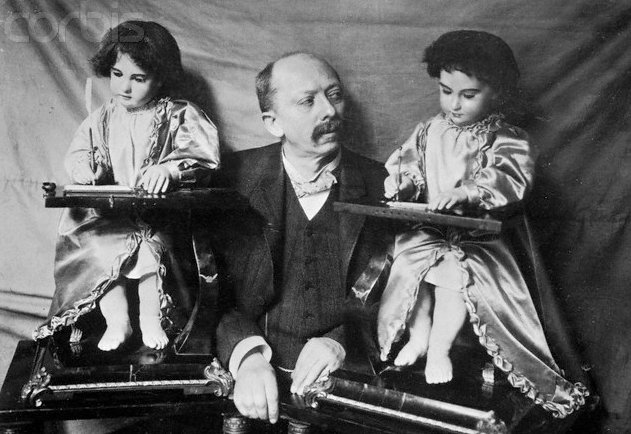Ancient Quest For Mechanical Life: Humanoid Robots Of Our Ancestors
A. Sutherland - AncientPages.com - The concept of humanoid robots has been known since ancient times. The first mention of this kind of mechanical device can be found in the Chinese philosophical treatise Liezi, which was built in the third century BC.
The first-century human-like machine was designed by the Greek inventor Hero of Alexandria.
However, al-Jazari - a Muslim polymath: a scholar, inventor, mechanical engineer, craftsman, artist, and mathematician from Jazirat ibn Umar, who lived during the Islamic Golden Age, is considered to be the father of robotics.
The mechanical genius - Al-Jazari (1136-1206) - was the most famous mechanical engineer of his time, some 1000 years ago. He was as talented as the famous Leonardo da Vinci, who also designed diverse machines and robots, but Al-Jazari lived 300 years earlier, i.e at the turn of the thirteenth century.
He is best known for writing the "Book of Knowledge of Ingenious Mechanical Devices" in 1206, where he described fifty mechanical devices and instructions on how to construct them.
The Elephant Clock, leaf from The Book of Knowledge of Ingenious Mechanical Devices by al–Jazari.
Al-Jazari pioneered advances in robotics and is credited with inventing the camshaft, the crankshaft, and segmental gearing - present in almost every machine today.
Among one of the most famous inventions of this competent engineer and skilled craftsman is 'The Elephant Clock', in which an automaton reacted after certain intervals of time. The various elements that compose this clock move and make a sound every half hour. This device is reminiscent of the elaborate clocks found in medieval town halls in Europe, which made the passage of time more entertaining with the performance of the moving figures.
Although none of the devices Al-Jazari's devised survived to modern times, they are other examples of centuries-old robots that are still fully functional.
One of them is a mechanical monk - a prayer machine that never tires - who was made approximately in 1562 by the Spanish watchmaker Juanelo Turri (c. 1500 — 1585) on request of King Philip II of Spain.
This one of the most fascinating clockwork automatons ever made, a 15-inch high figure of a well-known miraculous monk, San Diego de Alcalá.
The circumstances of this robot are that the son of the King of Spain, Don Carlos, fell down a set of stairs in 1562 and fell into a deep illness due to his injuries. The King prayed to God, asking for his son to be spared with a miracle and promising a miracle in return.
In a few days, the boy began to heal, and in the end, he was perfectly fine. The King then commissioned this monk as a celebration of prayer, piety, and faith.
This automaton - probably one of the most miraculous things anyone had ever seen in the 16th century - is now in the collection of the Smithsonian Museum in Washington, DC.
In the years 1768-1774, the Swiss watchmaker Pierre Jaquet Droz and his son Henri-Louis constructed three extremely complex androids (housed in the Musée d'Art et d'Histoire of Neuchâtel in Switzerland) that intrigue people even today.
The dolls are endowed with different skills and they are: the Lady Musician, the Draftsman, and the most impressive of them - the Writer, made of 6000 pieces is sitting and holding a quill (goose feather) that dips into the inkwell, and then he shakes it slightly before beginning to draw letters on paper with the pen. There is a special mechanism, allowing his eyes to follow his work.
The Writer can write any text not exceeding 40 characters, spread over four lines. The main mechanism of the invention is the programming system disk (shown in the lower part of the image), which allows him to write text without external intervention. It is also possible to make him write any words, letter by letter.
The Writer might even be interrupted, stopping in the middle of the word, if asked, and wrote another.
The Cartoonist can draw four different drawings (portrait of Louis XV, the royal couple, dog, and Amora absorber chariot pulled by a butterfly), while the organist plays the organ.
The main mechanism of the Writer is the programming system disk, which allows him to write text without external intervention.
Karakuri mechanical puppet tradition is very long, and the oldest works are almost 300 years. The only existing illustrated manual, 'Karakuri Zui' written in the Edo period (1603~1867), helped restore this automatic doll.
The word "Karakuri" means a mechanical device. At first, the dolls had no driven mechanisms. However, in the seventeenth century, the Spaniards brought a mechanical clock to Japan, and the Japanese began to install the clock's mechanism in Karakuri dolls.
From now on, Karakuri androids could move and give out tea and confuse and surprise.
The first version of this article was originally published on April 23, 2015
Written by – A. Sutherland - AncientPages.com Senior Staff Writer
Copyright © AncientPages.com All rights reserved. This material may not be published, broadcast, rewritten or redistributed in whole or part without the express written permission of AncientPages.com
More From Ancient Pages
-
 DNA Reveals Participants In California’s Gold Rush Dined On Salted Atlantic Cod
Archaeology | Jan 7, 2022
DNA Reveals Participants In California’s Gold Rush Dined On Salted Atlantic Cod
Archaeology | Jan 7, 2022 -
 Eduba: Scribal School In Ancient Mesopotamia
Ancient History Facts | Jun 29, 2016
Eduba: Scribal School In Ancient Mesopotamia
Ancient History Facts | Jun 29, 2016 -
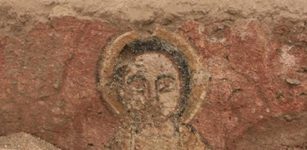 1,000-Year-Old Paintings Unearthed In Sudan – Documented By The Polish Researcher
Archaeology | Sep 25, 2022
1,000-Year-Old Paintings Unearthed In Sudan – Documented By The Polish Researcher
Archaeology | Sep 25, 2022 -
 Mystery Of The Royal Tombs At Vergina Deepens – Has Alexander The Great’s Sacred Purple Tunic Been Found Inside?
Archaeology | Oct 28, 2024
Mystery Of The Royal Tombs At Vergina Deepens – Has Alexander The Great’s Sacred Purple Tunic Been Found Inside?
Archaeology | Oct 28, 2024 -
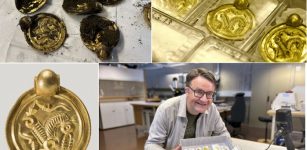 Largest Ancient Gold Treasure Of Its Kind Discovered In Stavanger, Norway
Archaeology | Sep 7, 2023
Largest Ancient Gold Treasure Of Its Kind Discovered In Stavanger, Norway
Archaeology | Sep 7, 2023 -
 Sistrum: A Magical, Sacred Ancient Egyptian Musical Object
Civilizations | Dec 31, 2014
Sistrum: A Magical, Sacred Ancient Egyptian Musical Object
Civilizations | Dec 31, 2014 -
 Secrets Of The Lost Tomb X – Mysterious Manuscripts And Strange Engravings – Part 1
Ancient Mysteries | Apr 9, 2019
Secrets Of The Lost Tomb X – Mysterious Manuscripts And Strange Engravings – Part 1
Ancient Mysteries | Apr 9, 2019 -
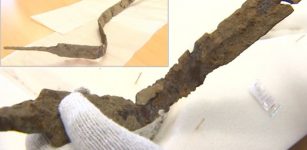 Rare 2000-Year-Old Celtic Sword Unearthed In East Bohemia
Archaeology | Sep 15, 2020
Rare 2000-Year-Old Celtic Sword Unearthed In East Bohemia
Archaeology | Sep 15, 2020 -
 Unknown Inscription Accidentally Found In South Tower Of 13th Century Cēsis Castle In Latvia
Archaeology | Aug 18, 2020
Unknown Inscription Accidentally Found In South Tower Of 13th Century Cēsis Castle In Latvia
Archaeology | Aug 18, 2020 -
 On This Day In History: First Experimental Hydrogen-Filled Balloon Reaches A 900m Altitude – On August 27, 1783
News | Aug 27, 2016
On This Day In History: First Experimental Hydrogen-Filled Balloon Reaches A 900m Altitude – On August 27, 1783
News | Aug 27, 2016 -
 Is North America’s Oldest House In Ohio A 12,250-Year-Old Clovis Dwelling? Archaeologists Re-Investigate The Paleo Crossing Site
Archaeology | Apr 28, 2022
Is North America’s Oldest House In Ohio A 12,250-Year-Old Clovis Dwelling? Archaeologists Re-Investigate The Paleo Crossing Site
Archaeology | Apr 28, 2022 -
 Has AI Found An Unknown Human Ancestor?
Archaeology | Jan 17, 2019
Has AI Found An Unknown Human Ancestor?
Archaeology | Jan 17, 2019 -
 Golosov Ravine – Mysterious Time-Warping Mist Causing Unexplained Disappearances And The Ancient Shrine Of God Veles
Featured Stories | Jul 3, 2021
Golosov Ravine – Mysterious Time-Warping Mist Causing Unexplained Disappearances And The Ancient Shrine Of God Veles
Featured Stories | Jul 3, 2021 -
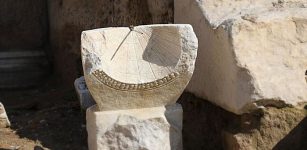 2,000-Year-Old Sundial Discovered In Ancient City Of Laodicea, Turkey
Archaeology | Mar 25, 2020
2,000-Year-Old Sundial Discovered In Ancient City Of Laodicea, Turkey
Archaeology | Mar 25, 2020 -
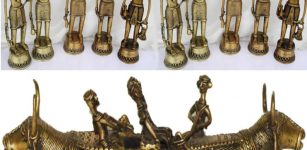 Telangana And Great Ancient Iron Masterwork Of Skilled Blacksmiths Of India
Ancient Technology | May 26, 2017
Telangana And Great Ancient Iron Masterwork Of Skilled Blacksmiths Of India
Ancient Technology | May 26, 2017 -
 Riddle Of The Ancient Lost City Beneath Missouri – A Puzzling Discovery
Civilizations | Mar 21, 2022
Riddle Of The Ancient Lost City Beneath Missouri – A Puzzling Discovery
Civilizations | Mar 21, 2022 -
 Your Destiny Is Engraved And Stored – Guardians Of The Great Mystery – Part 2
Ancient Mysteries | Jul 11, 2018
Your Destiny Is Engraved And Stored – Guardians Of The Great Mystery – Part 2
Ancient Mysteries | Jul 11, 2018 -
 Roman Fort Of Apsaros Reveal Some Of Its Archaeological Secrets
Archaeology | Nov 7, 2023
Roman Fort Of Apsaros Reveal Some Of Its Archaeological Secrets
Archaeology | Nov 7, 2023 -
 Unexplained Phenomenon In Ancient Ireland – When Legends, Science And Real Events Collide
Ancient Mysteries | Apr 19, 2018
Unexplained Phenomenon In Ancient Ireland – When Legends, Science And Real Events Collide
Ancient Mysteries | Apr 19, 2018 -
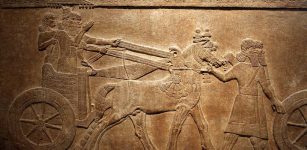 Pax Assyriaca: Important Time For The Neo Assyrian Empire And Surrounding Regions
Ancient History Facts | Aug 11, 2016
Pax Assyriaca: Important Time For The Neo Assyrian Empire And Surrounding Regions
Ancient History Facts | Aug 11, 2016



